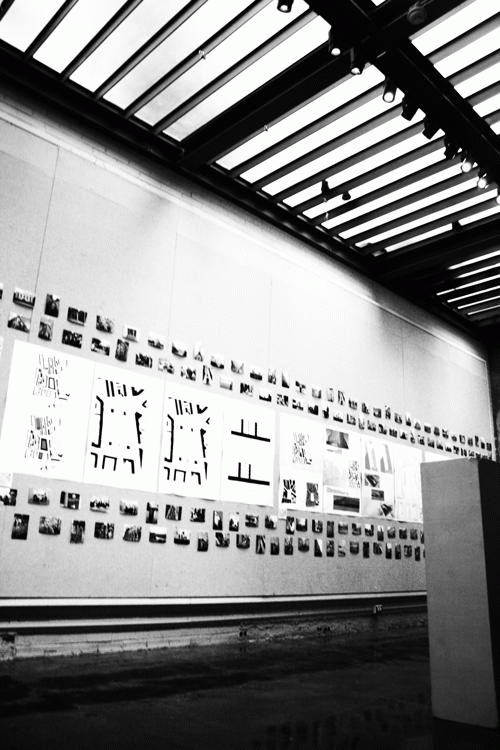
Students’ work from the Ungers Archiv für Architekturwissenschaft is displayed in the gallery. Photos of the cultural experience frame the exhibit. (Damien Watson | The Miami Student)
Miami University's Cage Gallery, located in Alumni Hall, is currently displaying the work of five Miami students from its summer design workshop in Cologne, Germany.
This past summer Miami architecture professor Gerardo Brown-Manrique took four undergraduate students and one graduate student to Cologne for a five-week workshop to study the work of O.M. Ungers at the Ungers Archiv für Architekturwissenschaft.
According to Brown-Manrique, the students spent the five weeks based out of Ungers' archives, which are located in his old home in Cologne. Brown-Manrique had Ungers, who passed away in 2007, as a professor in graduate school at Cornell University and has been close with his family ever since. For his faculty leave three years ago Brown-Manrique spent the semester in Germany with Ungers' family and explored the idea of bringing students to Ungers' archives for a summer design workshop.
Ungers had a very rich collection of architecture texts, which Brown-Manrique believes was a great resource for the students to understand Ungers' work.
"Ungers collected everything that had to do with architecture," Brown-Manrique said. "He was deeply educated in the theory of architecture and wanted to be surrounded by that stuff."
Senior Matt Fischer, an architecture major who participated in the summer workshop, said that the whole idea of the program was to work with the Mega Form Theory, which entails designing a large building that has multiple uses. The students had to design a structure that would theoretically be placed on a full block just north of downtown Cologne.
Throughout the program the students would spend Monday through Thursday working on their design projects from 9 a.m. to 4 p.m., which is a standard German workday. The students spent the weekends traveling throughout Europe visiting buildings and museums of other countries. Once the program ended, the students spent another week traveling through Europe together. Pictures of their travels line the walls above and below the project layouts in the Cage Gallery, showing both the academic and cultural side to the program.
According to junior architecture major Susie Sabaitis, traveling around Europe and being able to design in Germany were the best parts of the program.
"It was interesting to see the urban fabric of Cologne and how European design was so different," Sabaitis said. "You don't just put it on a plot of land and leave it, you have to think of how the community is affected by it."
For Fischer, this urban design project was very different from the projects he is used to completing at Miami.
Enjoy what you're reading?
Signup for our newsletter
"Ungers was a proponent of 'function follows form', so we had to create a space that could be used for multiple tasks or occasions," said Fischer. "It was a very challenging project."
Brown-Manrique agreed that a major part of doing a mega form project is thinking of the long-term affects.
"It's not about what the building does now, but how it fits into the city," Brown-Manrique said.
The students' completed projects are on display until Sept. 21 in the Cage Gallery, which is free and open to the public weekdays 8 a.m. to 5 p.m.
"People coming into the gallery will get to see different views and designs that go on in places other than Ohio," Sabaitis said.
Brown-Manrique said he hopes to continue the workshop in Cologne for five years and expand to include students from other universities.




